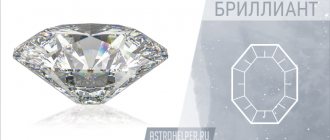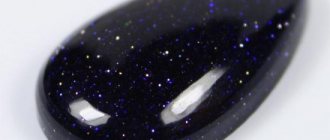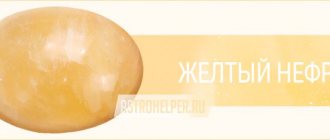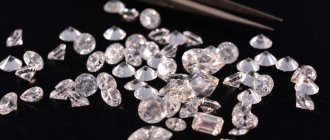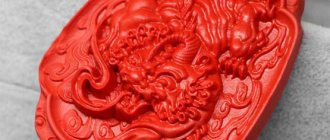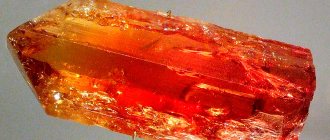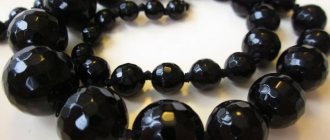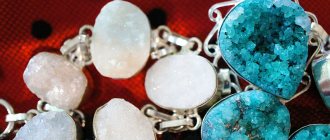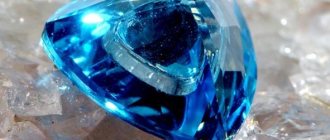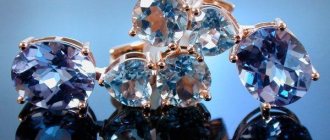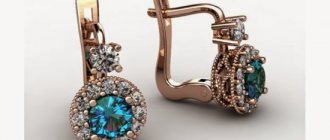How to clean topaz in a silver setting
Cleaning topaz in a silver setting is not particularly difficult. As already mentioned, do not use products that may contain high concentrations of chemicals that are harmful to the mineral.
Toothpaste
The first and most popular way to easily remove small traces of dirt and “revive” dull stones is to use regular toothpaste. First you need to wet the jewelry with cold water and then clean it with a small amount of paste. It is better to use an old and soft brush.
The procedure should last several minutes. After this, the decoration is washed again in water. It is important that the time during which the stone is in contact with water is minimal.
Vinegar
The second way to clean topaz set in silver is to prepare a solution of wine vinegar. Remember that you cannot use other types of vinegar essence.
Prepare a solution by filling a small container with warm water and adding five to eight drops of wine vinegar per 250 ml of water. Immerse the item in it for 30 minutes, and then quickly rinse with the same warm water and polish the topaz using a piece of soft cloth. Lightly wet the fabric with alcohol.
Special means
The third method is the simplest option, but the most costly in financial terms, unlike the first two. This is the use of special pastes for cleaning jewelry. Such remedies are not cheap, so the tried and tested home methods mentioned earlier can be safely used, and the effect will be the same.
Compatibility with Zodiac signs
Topaz suits all zodiac signs, but not Aquarius. You should wear jewelry with topaz:
- Twins. The stone makes people under this sign more peaceful and calm, and does not allow them to give free rein to completely inappropriate emotions, for example, during a quarrel. It restores energy and helps close the gap in your own energy field. Geminis will no longer be tormented by insomnia, and the risk of developing mental problems, which are often identified in representatives of this sign, will decrease. Yellow topazes are most suitable for Gemini.
- Scorpios. The talisman of Scorpios is blue and blue topazes. They help to meditate, focus on the goal, and protect against evil thoughts and actions towards the wearer. The talisman is of great benefit to older people who are not inclined to make concessions. It returns them to their former mobility, makes them more flexible, and encourages them to perceive all the changes that occur in a positive way. Thanks to the stone, older Capricorns have the opportunity to restore old acquaintances and find new people to communicate with.
- Capricorns. If the stone belongs to a man, then his natural wisdom will increase. The stone will give beauty to a woman. The condition of the skin, nails, and hair improves. The mineral should be worn by a person seeking to find true friends and find family happiness. But the stone should be chosen carefully, after consulting with an astrologer about the choice of amulet. A transparent, pink or brown gem will allow you to achieve everything you want, but a blue or green one can bring misfortune, destroying already established family relationships.
In addition to Aquarius, Taurus, who are the antagonists of Scorpio, also do not wear topaz. Their character and differences in psychotypes are cardinal. It is impossible to say with certainty what exactly will happen if a Taurus wears a crystal constantly. It is better to refrain and choose a more suitable stone.
Variegated mix
The shape of the crystals at different deposits varies.
Esotericists believe that topazes have subtle energy. Asceticism, fasting, and spiritual practices will help you tune in to it.
The color of the stones is unstable. Over time, the crystals fade. Especially if the stone is exposed to prolonged exposure to the sun and elevated temperatures. The latter include baths and saunas.
The beauty of Murza topazes cannot be described. And you can admire them at the Mining Institute and at the Mineralogical Museum of the Academy of Sciences.
There is a “heavyweight” in the world weighing 22,000 carats. His name is "Princess of Brazil". If you're in New York, you can admire it at the Natural History Museum.
Used to determine hardness on the Mohs scale.
Typically, topazes, when they are of normal size, are diamond-cut on top and step-cut on the bottom, and the platform is sometimes rounded.
Rauchtopaz has nothing to do with real topaz.
How to clean topaz in a gold setting
How to clean gold? Fill the container with warm water and make a solution by adding a little liquid soap (a few drops will be enough). It is better if the soap is for children, because its chemical composition is less aggressive than others.
Add a little ammonia to the solution and immerse the jewelry in it for an hour or a little less, maybe 40 minutes. After this, you will need to quickly rinse it in clean water and dry it with a soft piece of cloth.
Medicinal properties
Ancient healers used topaz to treat the gastrointestinal tract, poisoning and ulcers. In addition, they believed that this stone could sharpen the sense of taste, so they often decorated dishes with it. Topaz protects against colds and improves immunity. They have a calming effect and treat mental and nervous disorders.
A topaz amulet will help childless couples acquire long-awaited offspring. Blue crystals promote wound healing and have hemostatic properties. Topaz on the neck can relieve bronchopulmonary diseases.
Advertising - Continued below
Refinement of jewelry stones
Perfect gemstones are rare. That's why people needed ways to improve their natural properties - refining technologies. They lead to a change in color, while the resulting shade remains forever. Refinement is permitted at the legislative level.
The most commonly used heat treatment is the so-called. annealing or roasting. It is carried out at high temperatures (up to 2000°C) and under special conditions, different for different minerals. Annealing refinement can be applied to aquamarines, citrines, rubies, sapphires and diamonds.
The second method of refining, due to which precious stones change color, is irradiation. It is used incl. on diamond and topaz, often in combination with annealing. Due to bombardment by neutrons, diamonds become yellow, reddish, and aquamarine. Gamma radiation makes topazes turn blue. Don’t worry - such exposure cannot cause harm to human health.
In Diva jewelry stores you can buy jewelry with natural precious inserts. Looking for unusual chameleon stones? We will offer you finished products or make custom jewelry with a unique insert. St. Petersburg brand Diva - for connoisseurs of natural precious stones!
Deposits and production
Gems are mined almost all over the world. The rarest and most beautiful specimens were found in:
- Brazil (blue crystals, the country is the main supplier of minerals);
- Pakistan (pink gems);
- Russia (the Ilmen deposit in the Urals is rich in gems of different shades; both colorless topazes and rare blue stones are found here; there are similar deposits in Altai).
In Ukraine, in the Volyn deposit, there are solid deposits of stones of wine-yellow and blue shades. Residents of Sri Lanka have known topazes since ancient times. Beautiful and valuable gems are mined in the Alpine mountains in Switzerland.
Crystals are found in placer pebbles, greisen and granite pegmatites. The minerals occur in deposits rich in smoky quartz, morion, feldspar, mica, tourmalines and lepidolites. These can be stones weighing from a few grams to hundreds of kilograms.
Stones are “chameleons”
The first row stones and semi-precious minerals are endowed with the “chameleon” effect.
Alexandrite
The main gemstone that changes color. It is called imperial because it is named, associated with and directly influenced the fate of the Russian autocrat Alexander II.
True alexandrite
There is a well-known saying: in the morning alexandrite is an emerald, and in the evening it is a ruby:
- This quality of the stone is due to the type of crystal lattice plus the presence of iron, titanium and chromium. Of the entire visible spectrum, they perceive only red and green rays.
- In the morning and afternoon, when there is a lot of sun (and therefore ultraviolet radiation), chrome rules. The color of the mineral changes from violet to green plus bluish.
- In the evening, infrared radiation predominates and iron manifests itself. The crystals are colored crimson: ripe raspberries, red, purple.
- Through light filters, alexandrite exhibits an orange-yellow color.
- The effect is more pronounced in the evening or under artificial light. The stone becomes a deep ruby color, sometimes with a purple tint. During the day, the differences appear moderately.
The ability of a mineral to change its original color under different lighting conditions is recognized as a reference. Therefore, it is called the “Alexandrite effect” in relation to any mineral endowed with this quality.
Agate
A semi-precious stone that changes color depending on the health and mood of the owner.
Gray agate bracelet
A classic example is the story of the agate ring that belonged to Helena Blavatsky.
This is the main figure of the theosophical community of the 19th century. She wore the ring as a talisman for a long time, and when she left for the East, she gave it to her sister. One day the agate turned black. It later turned out that this happened at the time of the death of the former owner.
Sultanite
National treasure of Turkey, favorite gem of the sultans. Jewelry quality stones are mined only in this country.
Magic beauty stone
Sultanite changes color under the influence of the following factors:
- Illumination . At dusk or in low light it appears grassy green. The bright sun gives the mineral all shades of yellow: golden, amber, thick cognac. Right down to the raspberry glimmers.
- Impurities . The color of the gem is determined by the percentage of components.
- Cut, frame. The stone is only suitable for a frame made of platinum or high-grade gold. In another frame it fades.
In terms of multicolor and brightness of the color range, Turkish stone, which changes colors, is unconditionally ahead of alexandrite.
Amethyst
Amethyst is a jewelry variety of quartz. The “chameleon” effect is due to the composition: iron plus aluminum or iron plus manganese.
Pendant with amethyst
Shimmers include a full range of blue shades - from lilac blue to dark violet.
This stone changes color according to lighting or temperature:
- Illumination . “Day” amethysts show themselves in natural light.
If there is little light or it is artificial, the crystals look dull and turn pale. But the “evening” ones shimmer mysteriously. This variety is rare and is known as the "French Rose".
- Temperature . The mineral turns pale when heated. The signature purple color is replaced by yellow or greenish. Temperatures above 250 °C make it colorless. Color may change depending on the owner's body temperature.
The presence of “daytime” and “evening” amethysts simplifies the choice of jewelry with them for a specific time of day.
Tourmaline
Semi-precious mineral, boron-containing aluminosilicate. All types of tourmaline have the Alexandrite effect, but two have the strongest effect.
Tourmaline
Under artificial light, pink stone becomes deep brown, dark green stone turns brownish-red.
The bright sun is useful for magical recharging of the mineral.
Topaz
Yellow, blue and pink stones are endowed with changing shades.
Varieties of topaz
They are refined for color saturation. It remains constant under natural and electric light, but changes with prolonged exposure to the sun.
Yellow minerals become reddish, blue and pink ones become discolored.
Opal
Instances of some species are endowed with a unique optical effect: light reflections of the rainbow spectrum emanate from the surface. The phenomenon is called opalescence.
Blue fire opal
The most spectacular in this sense are Mexican opals. Their play of light is like an internal flame.
The color of opal is changed by sharp fluctuations in humidity (rain or its approach, immersion in water). The blue mineral becomes orange, the red one turns yellow.
Moon rock
Chameleon stone, changing according to the phases of the moon:
- during the new moon it becomes milky whitish; shine is minimal, iridescence is almost zero;
- closer to the full moon, transparency increases and luminosity appears;
- in some specimens a white dotted haze develops; it increases in size synchronously with the growth of the lunar disk.
Moonstone
Science has not solved this phenomenon; the occult community links the magical power of moonstone with it. It is believed that an inopportune change in its color or shine is a signal of impending danger for the owner.
Aquamarine
Aquamarine is a valuable variety of beryl with a bluish-green coloration.
Aquamarine
Delicately changes color when physical parameters change or depending on the owner’s mood:
- Vision angle. The smooth rotation of the gem reveals the silveriness coming from the depths of the crystal. It resembles a chrysanthemum flower.
- Temperature. Heating the mineral thickens the color, but unevenly.
- Illumination. Exposure to bright sun for many days makes the stone yellow-brown or earthy.
- X-ray. When irradiated with X-rays, aquamarine turns green-blue. However, the coloring is spotty.
- Magic factors. The mineral reacts to the condition of the owner or the weather. The predominance of green tones portends a storm in nature or a disorder of the owner’s feelings.
Cloudiness of transparent aquamarine is a warning about possible intrigues against the owner.
Pyrope
Pyrope is a “ruby” variety of garnet. The color is created by compounds of manganese, iron and chromium. Their ratio gives rise to a range of crystals - from deep red to almost black with greenish and purple tints.
Stone Pyrope
It’s not for nothing that the stone is called an energy barometer:
- in strong-willed, purposeful persons with powerful personal energy, the mineral becomes blood red; it kind of feeds them, helping them energetically;
- emaciated, lethargic people make it dull; the stone only aggravates this condition.
Blue Madagascar garnets have the most pronounced “Alexandrite” appearance than others. During the day they are able to display unpredictable shades, for which they are called “mood stones”:
- during the day the color is moderate: from grayish blue to dark green;
- under artificial light it is a deep red or purple.
The play of color in blue garnets intensifies as they approach the equatorial latitudes of the planet.
